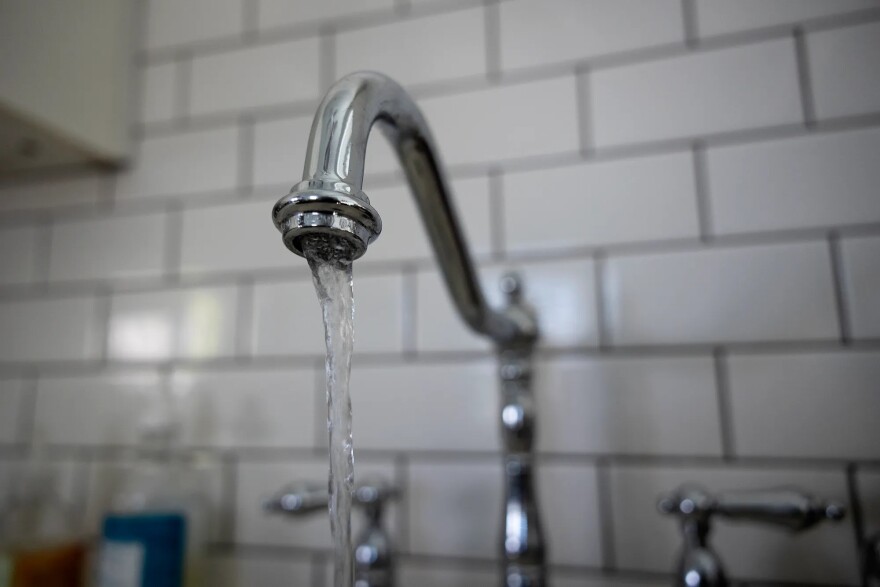Truth matters. Community matters. Your support makes both possible. LAist is one of the few places where news remains independent and free from political and corporate influence. Stand up for truth and for LAist. Make your tax-deductible donation now.
As Climate Crisis Worsens Drought, Local Water Supplies Are Needed. Southern California Cities Can Lead The Way

Drought is nothing new to us here in Southern California. But the climate crisis is making matters worse, so cities are investing more in conservation and local water supplies.
Santa Monica, for example, currently gets about 60% of its water from local groundwater and the rest is imported from the Colorado River or Northern California, according to Sunny Wang, the city’s water resources manager.
But since the 2015 drought, Santa Monica has invested more than $200 million in local water supply projects, Wang said. His goal is for the city to get 90% of its water through those projects as soon as next year.
“This is kind of our new normal and this is what we need to do to deal with climate change,” Wang said.
The projects include a first-of-its-kind facility that will go online later this summer, using stormwater and recycled wastewater to fill underground aquifers. Wang also wants the city to be the first in the state to incorporate “direct potable reuse.” In other words: recycle sewage water directly for drinking.
Recycling wastewater is nothing new. For decades, water suppliers have used recycled water to irrigate parks and golf courses. When wastewater is recycled for drinking, it’s usually first injected into underground basins before being treated to be safe for drinking — that’s called “indirect potable reuse.” Wang wants to eliminate that middle step, which could make the process more efficient and cheaper. California is in the midst of developing regulations for such a process, according to Wang.
“We're hoping to not only increase our resiliency, but also we're hoping to help advance the industry and provide examples on how to leverage local supply,” Wang said.
Direct potable reuse faces some regulatory challenges — and resistance from a grossed-out public — but it will likely play a big role in Southern California’s water security in the future.
The main water supplies for most of the Southland are reservoirs fed by the Colorado River as well as snowmelt in Northern California. California’s two largest reservoirs — Shasta Lake and Lake Oroville — are currently at critically low levels at a time of year when they’re usually at their highest levels.
Since 2000, the Colorado River has been dwindling from an unprecedented, long-term “megadrought” fueled by human-driven climate change, and its reservoirs are currently at their lowest levels in recorded history.
That’s why investing in local water supplies, managing groundwater and making conservation a way of life is the way of the future, Wang said. Like many other SoCal cities, Santa Monica has kept drought restrictions in place that were enacted in 2014.
“Our residents adopted that as just a normal way of life to conserve water and reduce their water demand permanently,” Wang said. Santa Monica residents use on average a few gallons less than 80 gallons a day, Wang said. That’s the goal of new drought restrictions for six million Californians that will go into effect on June 1. Santa Monica is exempt from those new restrictions mostly because of its local groundwater supply.
For decades, Southern California water suppliers have led the state in recycled water projects. L.A. aims to recycle 100% of its wastewater by 2035.
Largely because of investments by Southern California cities and water suppliers, recycled water use has more than doubled in California since the 1980s, according to research by the non-profit, nonpartisan Public Policy Institute of California.








